Just imagine what if world fastest animal clashes with the largest land carnivore? Cheetah vs Polar Bear. You are now entering to an epic battle comparison. Where raw speed clashes with raw strength. Cheetahs are built for speed, precision, and short bursts of explosive power. On the other hand, the polar bear is a heavyweight predator of the Arctic, unmatched in brute strength, endurance, and cold-weather survival.
These two creatures come from completely different worlds and have evolved for entirely different purposes. But what if they were forced to engaged to a face to face fight?
In this thrilling comparison of Cheetah vs Polar Bear, we’ll analyze their physical attributes, hunting strategies, defenses, and combat abilities to determine who would have the best authority in a hypothetical face to face fight. Hope you will enjoy!
1. Body Specifications
| Subtopic | Cheetah (Acinonyx jubatus) | Polar Bear (Ursus maritimus) | Winner |
|---|---|---|---|
| Shoulder Height | 0.8–0.9 m | 1.3–1.6 m | Polar Bear |
| Head-Body Length | 1.1–1.5 m | 2.4–3.0 m | Polar Bear |
| Weight | 35–72 kg | 350–700 kg (males) | Polar Bear |
| Bone Density | Lightweight (for speed) | High-density (buoyancy & strength) | Polar Bear |
| Muscle Mass % | ~50% of body weight | ~60–65% of body weight | Polar Bear |
| Tail Length | 0.6–0.8 m | ~13–15 cm | Cheetah |
| Skull Width | 12–14 cm | 25–30 cm | Polar Bear |
| Claw Type | Semi-retractable | Non-retractable | Polar Bear |
| Bone Strength Index | Lower (optimized for agility) | High (resistant to fractures) | Polar Bear |
| BMI (Body Mass Index) | 16–18 (lean build) | 40–60 (massive bulk) | Polar Bear |
Category Winner: Polar Bear – Dominates in size, muscle mass, and strength-oriented anatomy.
2. Coat and Coloration
| Subtopic | Cheetah | Polar Bear | Winner |
|---|---|---|---|
| Coat Color | Tan/yellow with black spots | Creamy white (hollow hair shafts) | Polar Bear |
| Pattern | Distinct black spots | Uniform color, slight variations | Cheetah |
| Function of Coat | Camouflage in savannahs | Insulation & Arctic camouflage | Polar Bear |
| Undercoat | Minimal | Dense insulating underfur | Polar Bear |
| Water Resistance | Poor | Excellent due to oil on fur | Polar Bear |
| Seasonal Molt | No significant change | Thickens in winter | Polar Bear |
| UV Protection | Moderate (melanin-rich skin) | High (black skin absorbs UV) | Polar Bear |
| Hair Density | ~2,000/cm² | ~10,000/cm² | Polar Bear |
| Skin Color | Pale-pink to dark grey | Black (absorbs heat) | Polar Bear |
| Melanin Level | Moderate | High (esp. in skin) | Polar Bear |
Category Winner: Polar Bear – Superior insulation, UV adaptation, and environmental camouflage.
3. Habitat and Range – Cheetah vs Polar Bear
| Subtopic | Cheetah | Polar Bear | Winner |
|---|---|---|---|
| Geographic Range | Sub-Saharan Africa, Iran | Arctic Circle (Canada, Russia, etc.) | Polar Bear |
| Habitat Type | Grasslands, savannahs | Sea ice, tundra, coastal areas | Polar Bear |
| Range Size | Up to 3,000 km² | >500,000 km² (migratory ranges) | Polar Bear |
| Temperature Tolerance | 10–40°C | -50 to +10°C | Polar Bear |
| Altitude Range | 0–2,000 m | Sea level to sea ice | Cheetah |
| Water Dependency | Moderate | High (marine mammal hunting) | Polar Bear |
| Adaptability | Limited habitat flexibility | Specialized for Arctic survival | Polar Bear |
| Human Proximity | Often near settlements | Avoids human areas | Cheetah |
| Home Range Defense | Territorial males | Solitary, vast ranges | Polar Bear |
| Climatic Preference | Dry, hot climates | Freezing, arctic | Draw |
Category Winner: Polar Bear – Broader range, extreme climate adaptation, and environmental resilience.
4. Diet and Hunting
| Subtopic | Cheetah | Polar Bear | Winner |
|---|---|---|---|
| Prey Type | Gazelles, impala, hares | Seals (ringed & bearded), carcasses | Polar Bear |
| Daily Caloric Intake | ~3,000 kcal | ~12,000–20,000 kcal | Polar Bear |
| Hunting Success Rate | ~40–50% | ~10–20% | Cheetah |
| Preferred Hunting Time | Day (diurnal) | Day/Night (depends on season) | Draw |
| Energy Expenditure | High (sprints) | High (cold exposure, swimming) | Draw |
| Hunting Techniques | Sprint-chase, trip with dewclaws | Ambush at breathing holes, stalking | Polar Bear |
| Kill Method | Suffocation via neck bite | Crushing skull or suffocation | Polar Bear |
| Feeding Frequency | Every 2–5 days | Once every few days to weeks | Polar Bear |
| Scavenging Behavior | Rare | Common if needed | Polar Bear |
| Food Storage | No caching | Occasional caching of kills | Polar Bear |
Category Winner: Polar Bear – Dominates in caloric intake, prey size, and survival-oriented feeding habits.
5. Strength and Bite Force
| Subtopic | Cheetah | Polar Bear | Winner |
|---|---|---|---|
| Bite Force (PSI) | ~475 PSI | ~1,200 PSI | Polar Bear |
| Claw Strength | Sharp, semi-retractable claws | Large, curved claws with great force | Polar Bear |
| Lifting Capacity | ~50 kg (own body weight prey) | Up to 500 kg or more | Polar Bear |
| Paw Size | ~7–8 cm wide | Up to 30 cm wide | Polar Bear |
| Muscle Power | Optimized for speed, not brute force | Extremely powerful for dragging prey | Polar Bear |
| Bone Crushing Ability | Limited | Can crush seal skulls easily | Polar Bear |
| Swipe Force | Moderate (~200–300 kg of force) | Over 1,000 kg of force | Polar Bear |
| Grip Strength | Medium | Exceptional | Polar Bear |
| Combat Endurance | Short bursts | Prolonged engagement possible | Polar Bear |
| Overall Physical Power | Agile and lean | Massive and strong | Polar Bear |
Category Winner: Polar Bear – Sheer force and crushing strength give it a decisive edge.
6. Speed and Agility – Cheetah vs Polar Bear
| Subtopic | Cheetah | Polar Bear | Winner |
|---|---|---|---|
| Top Speed | 100–120 km/h | 40 km/h | Cheetah |
| Acceleration (0–60 km/h) | ~3 seconds | N/A | Cheetah |
| Agility on Land | Extremely high | Low | Cheetah |
| Turning Radius | Tight (~7 m) | Wide (~15–20 m) | Cheetah |
| Water Agility | Avoids water | Excellent swimmer (~10 km/h) | Polar Bear |
| Endurance at Speed | 20–30 seconds | Can walk/swim for hours | Polar Bear |
| Flexibility | Very flexible spine | Rigid, heavy structure | Cheetah |
| Jumping Distance | 6–9 meters | ~2 meters | Cheetah |
| Reaction Time | Milliseconds (exceptional reflexes) | Slower reflexes | Cheetah |
| Sprinting Capacity | Elite sprinter | Power walker/swimmer | Cheetah |
Category Winner: Cheetah – World’s fastest land mammal with unmatched agility.
7. Senses – Cheetah vs Polar Bear
| Subtopic | Cheetah | Polar Bear | Winner |
|---|---|---|---|
| Vision Acuity | High daytime (diurnal) vision | Good night & low-light vision | Draw |
| Hearing Range | 0.2 to 65 kHz | 0.2 to 60 kHz | Cheetah |
| Olfactory Power | Moderate (~200 million olfactory receptors) | Very high (~300 million) | Polar Bear |
| Smelling Range | Up to 2 km | Up to 30 km | Polar Bear |
| Sound Localization | Highly sensitive | Moderate | Cheetah |
| Night Vision | Low | High | Polar Bear |
| Sensory Hair Function | Limited | Vibrissae aid in navigation | Polar Bear |
| Thermal Detection | None | None | Draw |
| Binocular Vision | Yes | Yes | Draw |
| Color Perception | Dichromatic (some color) | Dichromatic | Draw |
Category Winner: Polar Bear – Dominates in olfactory capabilities and night vision.
8. Reproduction and Lifespan
| Subtopic | Cheetah | Polar Bear | Winner |
|---|---|---|---|
| Gestation Period | 90–95 days | 195–265 days | Cheetah |
| Litter Size | 3–5 cubs | 1–3 cubs | Cheetah |
| Birth Weight | ~300 g | ~600–700 g | Polar Bear |
| Cub Mortality Rate | High (~70%) | Moderate (~40%) | Polar Bear |
| Sexual Maturity | ~2 years | 4–6 years | Cheetah |
| Reproduction Frequency | Every 1.5–2 years | Every 2–3 years | Cheetah |
| Maternal Investment | Moderate | Very high (long dependency) | Polar Bear |
| Lifespan (Wild) | 10–12 years | 20–25 years | Polar Bear |
| Lifespan (Captivity) | Up to 17 years | Up to 35 years | Polar Bear |
| Reproductive Success Rate | Low | Moderate | Polar Bear |
Category Winner: Polar Bear – Longer lifespan and higher offspring survival.
9. Social Behavior – Cheetah vs Polar Bear
| Subtopic | Cheetah | Polar Bear | Winner |
|---|---|---|---|
| Social Structure | Solitary (except mothers & cubs) | Solitary | Draw |
| Territorial Range | ~800–1,500 km² | ~300,000+ km² | Polar Bear |
| Communication | Visual and vocal | Scent, visual, and vocal | Draw |
| Conflict Resolution | Rarely confronts; avoids conflict | May engage in aggressive encounters | Cheetah |
| Marking Behavior | Scent marking with urine | Similar (scent and scratches) | Draw |
| Cub Rearing | Female raises alone | Female raises alone | Draw |
| Male Interaction | Some coalition behavior (males) | Avoidant | Cheetah |
| Grooming Behavior | Self-grooming; social in siblings | Minimal grooming | Cheetah |
| Vocalizations | Chirps, growls, purrs | Growls, roars, huffs | Draw |
| Inter-Species Tolerance | Often coexists with lions/leopards | Dominant apex predator | Polar Bear |
Category Winner: Cheetah – Slight advantage due to unique coalition behavior and non-confrontational nature.
10. Conservation Status
| Subtopic | Cheetah | Polar Bear | Winner |
|---|---|---|---|
| IUCN Status | Vulnerable | Vulnerable | Draw |
| Estimated Population | ~6,500 (wild) | ~22,000–31,000 | Polar Bear |
| Threats | Habitat loss, poaching, low genetic diversity | Climate change, pollution | Draw |
| Protected Areas | Several reserves across Africa | Arctic conservation zones | Draw |
| Breeding Programs | Active in zoos worldwide | Also active in Arctic research centers | Draw |
| Human Conflict | Increasing in farmland | Conflict during urban encroachment | Draw |
| Habitat Fragmentation | High | Moderate | Polar Bear |
| Conservation Funding | Moderate | High due to global interest | Polar Bear |
| Genetic Diversity | Very low | Moderate | Polar Bear |
| Reintroduction Success | Limited | Not widely implemented | Draw |
Category Winner: Polar Bear – Larger population and more robust conservation resources.
Face-to-Face Fight Analysis
- In a hypothetical fight, the cheetah would likely avoid direct combat due to its lightweight frame and non-aggressive nature.
- The polar bear, with its immense size (up to 700 kg), powerful swipes, and crushing jaws, would easily overpower the cheetah.
- Even the cheetah’s speed offers no advantage in close quarters or Arctic environments, where the polar bear thrives.
Face-to-Face Fight Winner: Polar Bear
Conclusion: Overall Winner
| Total Categories Won | Cheetah: 2 | Polar Bear: 7 | Draw: 1 |
Overall Winner: Polar Bear
✅ Reasons Why Polar Bear Wins:
- Dominates in size, strength, bite force, and durability.
- Superior sensory capabilities and survival adaptations.
- Longer lifespan and higher cub survival rate.
- More effective predator with high caloric needs met in harsh environments.
- In a fight, the cheetah has no realistic chance against the bulk and power of the polar bear.
❌ Why the Cheetah Loses:
- Built for speed and agility, not combat.
- Lightweight build and low bite force.
- High cub mortality and low genetic diversity.
- Not a confrontational predator.
Interesting Facts – Cheetah vs Polar Bear
Cheetah
-
Fastest land animal, reaching speeds up to 70 mph (112 km/h).
-
Can accelerate from 0 to 45 mph in just 2.5 seconds.
-
Has semi-retractable claws for extra grip during sprints.
-
Flexible spine and enlarged lungs, heart, and nostrils support high-speed running.
-
Only big cat that cannot roar; instead, it purrs, hisses, and chirps.
-
Uses its long tail as a rudder to make sharp turns while chasing prey.
-
Spots and tear-shaped stripes help with camouflage and reduce glare.
-
Hunts mostly during the day and relies on stealth and speed.
-
Females are solitary; males may form lifelong coalitions.
-
Cubs have high mortality rates, and cheetahs are considered vulnerable in the wild.
Polar Bear
-
Largest land carnivore, with adults weighing up to 680 kg and measuring over 2.5 meters long.
-
Has thick fur and a blubber layer for insulation in Arctic cold.
-
Skin is black beneath the fur to absorb and retain heat from the sun.
-
Exceptional sense of smell—can detect seals nearly 16 km away.
-
Powerful swimmer; can swim over 100 km at a stretch, using webbed paws as paddles.
-
Relies on sea ice for hunting seals, waiting patiently at breathing holes.
-
Wide, paddle-like paws act as snowshoes and aid in swimming.
-
Undergoes a “walking hibernation” to conserve energy during scarce food periods
-
Migrates with shifting sea ice and can travel long distances
-
Apex predator of the Arctic, perfectly adapted for survival in extreme environments
References
- Carbone, C., et al. (2007). The costs of carnivory. Nature, 437(7056), 913–916.
- Pagano, A. M., et al. (2018). High-energy, high-fat lifestyle challenges an Arctic apex predator. Science, 359(6375), 568–572.
- Marker, L. L., et al. (2008). Demography of the Namibian cheetah, Acinonyx jubatus jubatus. Biological Conservation, 144(3), 986–997.
- IUCN Red List of Threatened Species. (2024). www.iucnredlist.org
- Nowak, R. M. (1999). Walker’s Mammals of the World. Johns Hopkins University Press.
- National Geographic & WWF Polar Bear Tracker Programs.
- Estes, R. D. (1991). The Behavior Guide to African Mammals. University of California Press.
Read More – Cheetah vs Jaguar vs Leopard : A Comprehensive Comparison
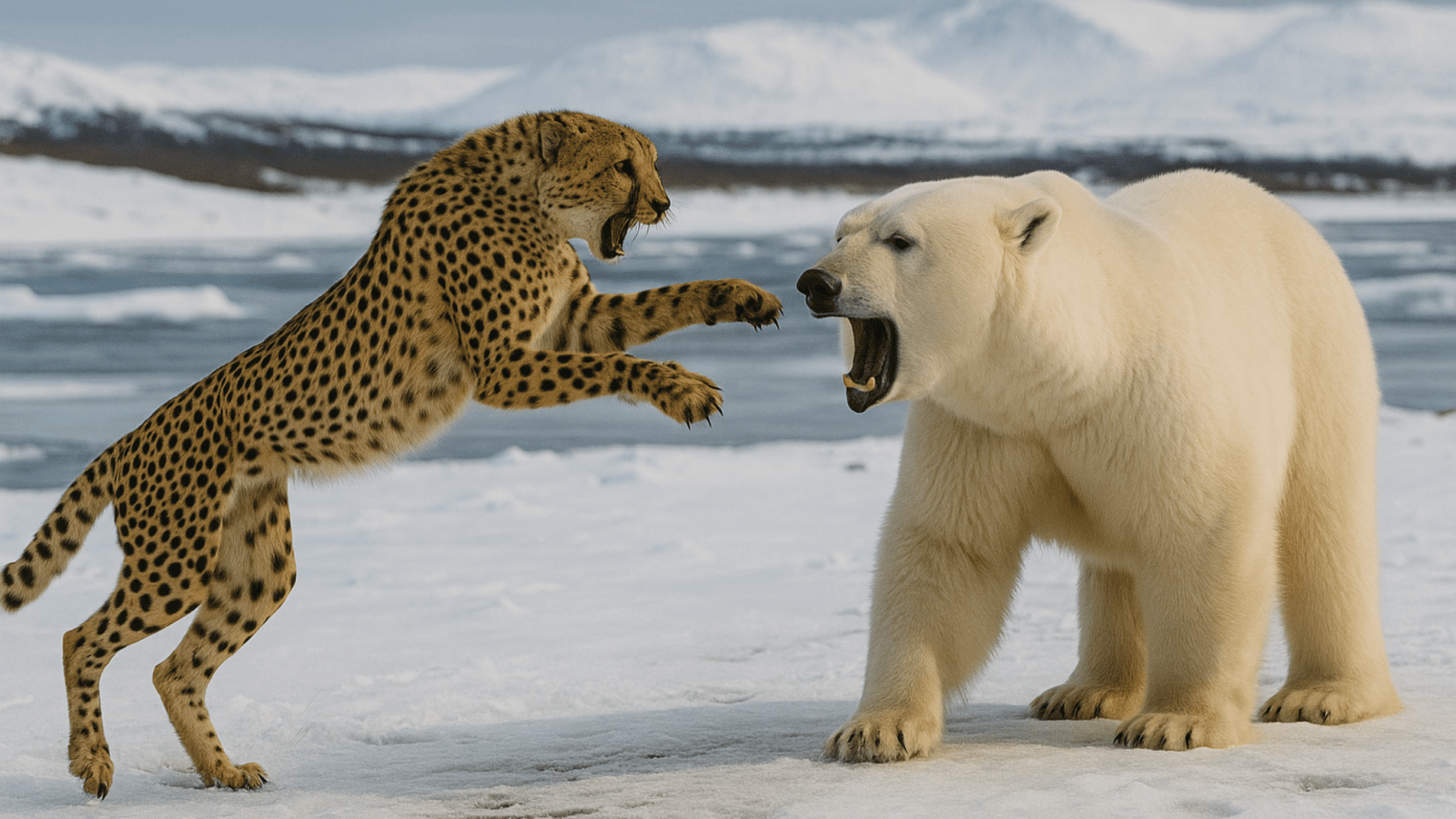
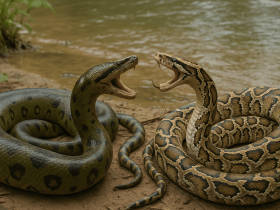
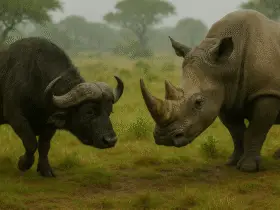
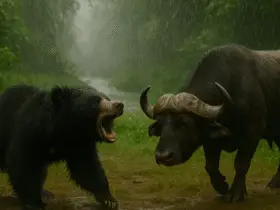
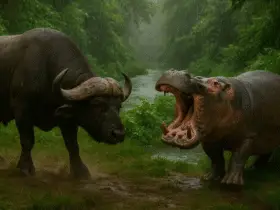
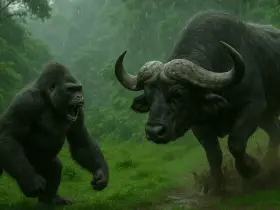
Leave a Reply